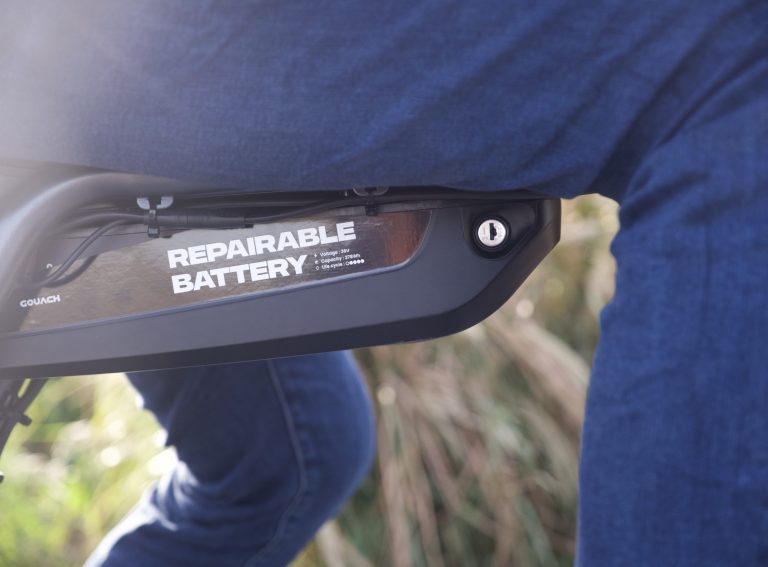New research by Dott and computer vision firm Luna has revealed some of the primary reasons why scooterists often find themselves on the sidewalk.
Gathered from AI-powered cameras fitted to Dott’s e-scooters, the collaborative study monitored more than 3,000 trips across Brussels, Grenoble and Tel Aviv.
Zag Daily: Your report found that 26% of pavement riding occurrences were caused by irresponsible rider behaviour. How will you address errant riding?
IA: “We’re exploring a means of educating those users that have been detected to ride irresponsibly, and also using fines and warnings. What we find is that one warning is usually enough to make people correct their behaviour and if they don’t, we reserve the right to remove them from our service.
“Having said that, it’s important to remember that 26% of pavement riding instances were due to errant behaviour but that comes down to approximately 2% of what we actually measured. This is because 93% of rides took place on roads and cycle lanes and 7% of rides were on the pavement. Of that 7%, 5% was due to infrastructure and then 2% is left which was due to errant behaviour. We need interventions that prevent repeat pavement riding for this 2% and we need preventative measures. But the first step of this experiment was to understand the size of the problem and the root causes.”
Zag Daily: If infrastructure is one of the root causes of pavement riding, how do you intend to make a tangible difference?
AF: “We can identify hotspots and then zone in on them. In one case in Grenoble, we saw that a certain corner had been pedestrianised in a way which caused cyclists to start pavement riding where the cycle lane ends. This was a case where the city had spent money on infrastructure, but it didn’t work for the scooterist or cyclist. So, in some cases infrastructure investment is needed but in others, something much smaller is needed. There was another case in Grenoble where the bike lane stopped at a major junction. It obviously confused riders and they had to transition into using the zebra crossing. With scooterists, it’s interesting to see how often people get on and off the scooter. It’s halfway between cycling and walking so they often switch between the two. In this instance, if the bike lane had just been painted into the junction, then it would have had a huge impact on the number of sidewalk riders there. In some cases, we need to advocate for infrastructure investment, but in others it’s just a can of paint that’s needed.”
Zag Daily: The perception of scooters could also be muddled by parking bays being on the pavement rather than on the road. What do you think about that?
IA: “We always advocate for parking bays being on the road. Of the 7% of pavement riding, one third of it was due to scooterists getting on or off the pavement to access a parking bay. I think this is where we can have the biggest impact. A city’s long term capital fund is probably out of our scope, but advocating for parking bays on the road is the low hanging fruit for us.”
Zag Daily: What other hotspots did you find?
AF: “There are many hotspots in each city, but we always note them under the provision that there are regulations we are perhaps not aware of. In Tel Aviv, we saw many instances where the bike lane just runs into the sidewalk. We see differences in the type of bike lane too. For example, in some cities a bike lane has been painted onto a wide sidewalk which can be distinguished if it’s well painted. But where the bike lane wasn’t so distinguished from the sidewalk, we found more frequent occurrences of people drifting in and out of it.”
Zag Daily: That obviously poses a safety problem. How have you been taking note of the safety risks that come with pavement riding?
AF: “What we found across the course of the study is that all sidewalk riding events are not created equal. Sidewalk riding in an industrial estate when nobody is around is not equal to riding on the pavement in the central business district at 9AM. We’ve been categorising riders using different criteria, like their speed. If the scooter is going under six kilometres per hour, then we can assume the rider is walking. If the scooter is going above 10 kilometres per hour, then it’s too fast for the rider to be walking on the sidewalk. We also look at how many people are on the riding surface and the duration of how long the rider has been on it. So, we categorise the events and that lays the foundation for what happens next.”
Zag Daily: What feedback have you received from cities?
IA: “It’s been very positive so far and the data has been helpful for cities to understand how to better integrate micromobility. It’s a new mode of transport and there’s a lot of perceptions and debate about it so the more data we can provide, the better it is for the future of scooters. To further understand rider behaviours across Europe, there is already a pilot underway in London and future studies will take place in Madrid and Lyon this autumn.”





